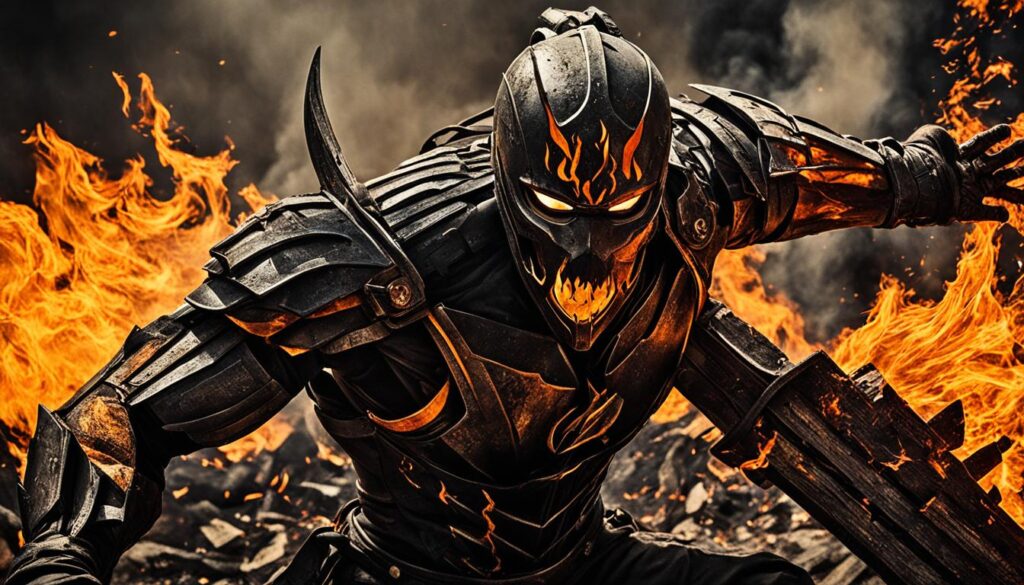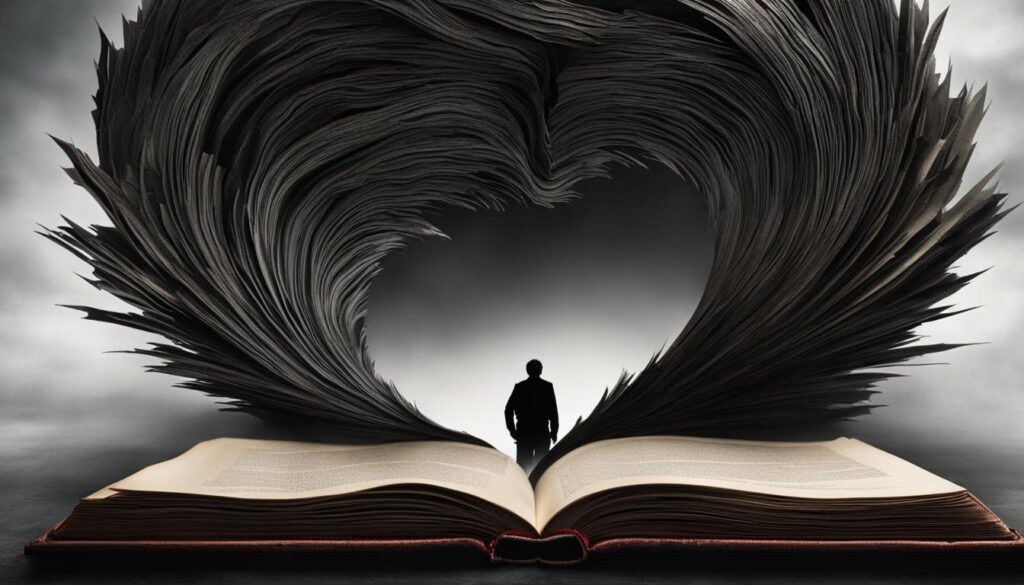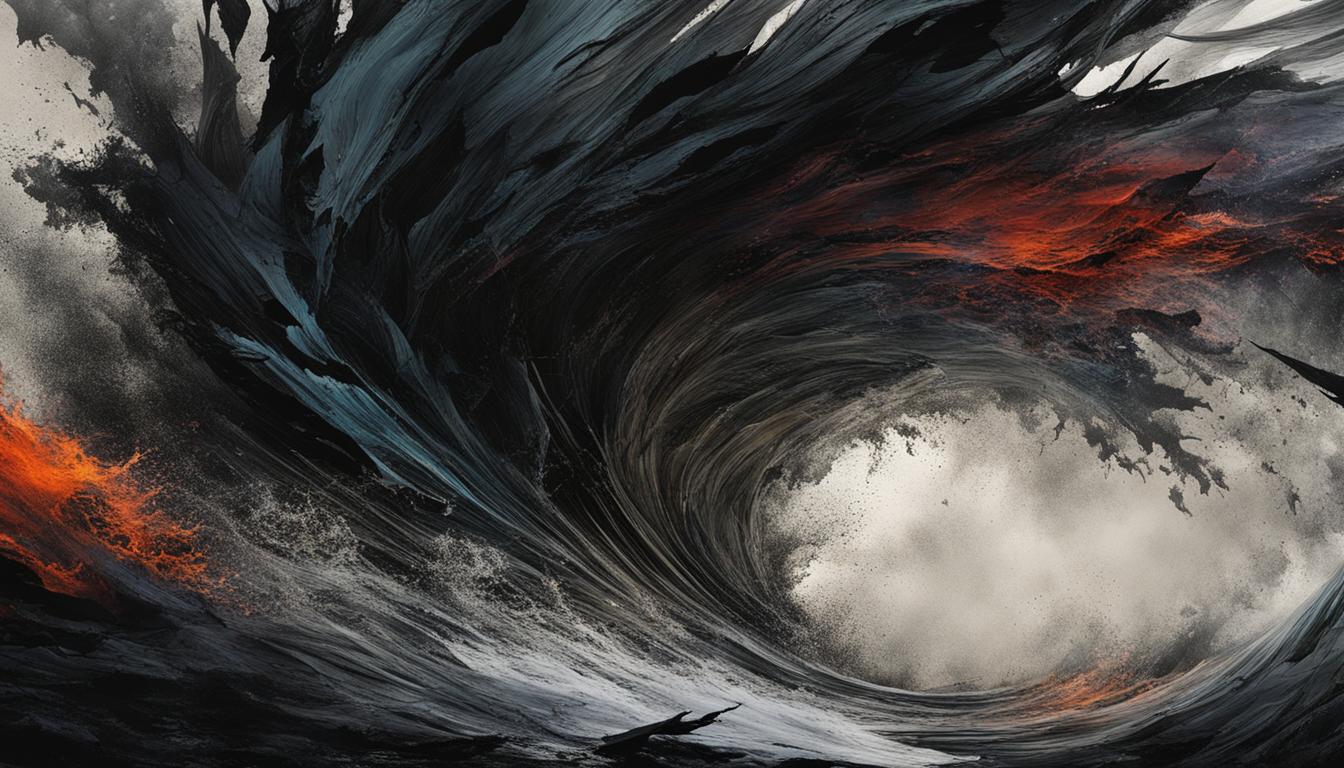Welcome to our comprehensive analysis of Stephen King’s book, Rage. In this in-depth examination, we delve into the complexities and themes of this controversial novel. Our analysis covers a wide range of topics including plot summary, character analysis, writing style, psychological implications, societal impact, critical reception, and more. Through this analysis, we aim to provide a nuanced understanding of the book and its place in King’s larger body of work. Join us as we embark on a journey through the world of Rage.
Introduction to Stephen King’s Rage
Stephen King’s book, Rage, was initially published in 1977 under the pseudonym Richard Bachman. The novel tells the story of Charlie Decker, a high school student who one day brings a gun to school and holds his classmates hostage.
Rage was King’s fourth novel and his first to be published under a pseudonym. The book was initially received positively by critics, who praised King’s writing and the novel’s exploration of adolescent rage and violence.
However, the book’s violent content and its disturbing portrayal of a school shooting led to controversy and criticism. King himself has since disavowed the novel and it has been out of print since 1997.
Despite this controversy, Rage continues to be of interest to literary scholars and fans of Stephen King’s work, who have sought to understand its themes and significance in the author’s body of work.
Plot Summary and Characters
In this section, we present a detailed plot summary of Stephen King’s Rage and analyze the central characters that populate the story. The novel follows Charlie Decker, a troubled high school student who enters his algebra class with a gun and holds his classmates and teacher hostage. As the authorities try to negotiate with the young man, Charlie reflects on his past experiences of bullying and frustration.
| Characters | Description |
|---|---|
| Charlie Decker | The protagonist of the story, who feels overwhelmed by his emotions and manifests them in a violent act. |
| Ted Jones | A former classmate of Charlie’s who identifies with his struggles and tries to reason with him. |
| Chris Unwin | A popular jock who tormented Charlie and played a crucial role in triggering his violent outburst. |
| Mr. Vance | The algebra teacher who tries to handle the situation and connect with Charlie on a personal level. |
As the plot unfolds, we see how these characters and their interactions contribute to Charlie’s decision to take action and the ensuing consequences. Through his exploration of teenage angst and the dark corners of the human psyche, King draws attention to the dangers of social isolation and the need for compassion and understanding.
Themes and Symbolism in Rage
Stephen King’s book, Rage, is a powerful commentary on the struggles and uncertainties of adolescence. Through its portrayal of central themes and symbolism, the book explores the complexities of teenage angst and the transition into adulthood.
One of the central themes in Rage is the idea of isolation. Throughout the book, the protagonist, Charlie Decker, is portrayed as being increasingly isolated from the rest of society, both physically and emotionally. This is reflected in the symbolism of the high-school classroom, which serves as a metaphor for the artificial and oppressive values of ‘adult’ society, trapping Charlie and his peers in a Kafkaesque world that destroys any sense of individuality or self-worth.
Another central theme in Rage is the idea of the ‘monstrous’. The book portrays a world in which the line between the human and the inhuman is constantly blurred, with the characters frequently struggling to define what is real and what is not. This is reflected in the symbolism of the spider, which is used to represent the uncontrolled and sinister aspects of human nature that lurk beneath the surface, threatening to burst forth at any moment.

Symbolism in Rage
| Symbol | Meaning |
|---|---|
| High-school classroom | Isolation, oppression, artificiality |
| Spider | Monstrosity, darkness, danger |
Overall, Stephen King’s book Rage is a powerful exploration of the deep and complex emotions that define the teenage experience. Its themes and symbolism offer a rich and nuanced portrayal of the challenges and uncertainties that come with the journey into adulthood, making it a vital and engaging read for anyone interested in the human condition.
Controversies Surrounding Rage
Stephen King’s book, Rage, has been the subject of several controversies since it was first published in 1977. Many have criticized the book for glorifying and inciting violence, especially given its content about a school shooting.
One of the most controversial aspects of Rage is its alleged connection to real-life incidents. The book has been linked to several high-profile school shootings, including the Columbine High School massacre and Virginia Tech shooting. While there is no concrete evidence linking the book to these crimes, some have argued that its depiction of a school shooting may have inspired the perpetrators.
Despite the controversy, Stephen King has defended the book, arguing that it was intended as a warning against violence and should be seen as a cautionary tale. However, in the wake of several school shootings, King has since allowed the book to go out of print.
Despite the controversies surrounding Rage, the book remains a significant work of fiction that has sparked important discussions about violence, mental health, and the impact of literature on society.
Analysis of Writing Style
In Stephen King’s novel Rage, the writing style is a prominent feature that contributes to the overall impact of the story. King’s use of language, narrative techniques, and storytelling approach has made him one of the most successful and celebrated authors.
One of the notable features of King’s writing style is his ability to create a vivid and palpable sense of atmosphere that immerses readers within the narrative. His writing flows smoothly, making the plot and characters engaging and believable. King’s description of the characters and settings in Rage paints a realistic picture that readers can connect with, capturing their attention and emotions.
The narrative technique utilized in the novel also adds to the suspense-filled atmosphere of the story. King draws the reader in with the first-person narrator and an unreliable account of events that unfolds into a gripping storyline. The use of dialogue to reveal character traits, thoughts, and feelings also makes the characters more relatable and three-dimensional.
King’s overall storytelling approach incorporates a dynamic structure that balances introspection and action, creating a well-rounded plot that keeps the reader engaged throughout the novel. The novel is both character-driven and plot-driven, which makes it a captivating and thought-provoking read about current societal issues.
Examples
| Writing Style Element | Example from the Book |
|---|---|
| Language | “He was still shaking harder than any of us.” A sentence that conveys a sense of fear and urgency to the readers. |
| Narrative Technique | The use of first-person narration and untrustworthy narrator adds a layer of suspense and intrigue to the story. |
| Storytelling Approach | The balance between character development and plot progression maintains a steady pace throughout the book, keeping readers engaged and invested. |
Overall, Stephen King’s writing style in Rage is exemplary, utilizing a range of literary techniques and stylistic elements to create a compelling and immersive story.
Psychological and Societal Implications
Stephen King’s Rage explores a variety of themes centered around the consequences of societal alienation, isolation, and societal pressure. The destructive nature of bullying and the psychological implications of violence and its impact on mental health are also central themes in the book. King’s depiction of Charlie Decker, a high school student who commits atrocities, raises provocative psychological implications about the effect of profound trauma, discrimination, and emotional neglect on an individual’s psyche. King’s visceral and emotionally charged writing style serves to underscore the severity of the issues and challenges that face our current society.
At its core, Rage is a powerful statement on the human condition, prompting readers to question the roots of violent behavior and the societal and cultural pressures that influence it. King’s knack for creating characters, situations, and relationships that resonate with readers enables this reflective masterpiece to have a lasting effect on readers beyond the confines of its pages.

Critical Reception and Impact
Stephen King’s book, Rage, has had a mixed reception since its release. While some have praised the book’s exploration of sensitive topics, such as teenage violence, others have criticized it for glorifying these issues. Despite the divisive reactions, Rage has had a profound impact on literature and society.
Certain literary critics have lauded the book’s powerful and thought-provoking themes. For instance, Roger Ebert praised the book, stating “It’s a book that forces you to have an opinion, forces you to take sides.” Additionally, Joanne Harris praised the book on social media, stating “Love him or hate him Stephen King writes books that have shaped our world into what it is today.”
On the other hand, some people have argued that the book was inappropriate and has even led to real-life violent incidents. Following the Heath High School shooting in 1997, there were calls for the book to be banned and for Stephen King to take responsibility for the shooting. However, the author distanced himself from the incident and eventually decided to let the book go out of print.
The impact of Rage can still be felt today, particularly in the current societal dialogue around gun violence and mental health awareness. The book’s lasting legacy, combined with Stephen King’s immense popularity as an author, ensures that its impact will continue to be felt for years to come.
Adaptations and Influence
Stephen King’s novel, Rage, has not been adapted into any film or television adaptations. However, the book has still had a significant influence on popular culture and future works of fiction.
The most notable example of Rage’s influence is the controversy that surrounded the book after it was linked to several school shootings in the 1980s and 1990s. In response, King pulled the book from publication and it has never been re-released in the United States.
Despite its controversial history, Rage continues to influence contemporary fiction writers. The themes of isolation, rebellion, and adolescent angst that are explored in the book can be seen in modern young adult literature.
Additionally, the character of Charlie Decker, the protagonist of Rage, has been compared to other famous literary characters, such as Holden Caulfield from J.D. Salinger’s The Catcher in the Rye and Tyler Durden from Chuck Palahniuk’s Fight Club. These comparisons highlight the lasting impact that Rage has had on the literary world.
Comparison Table: Similar Works
| Book Title | Author | Year of Publication |
|---|---|---|
| The Catcher in the Rye | J.D. Salinger | 1951 |
| Fight Club | Chuck Palahniuk | 1996 |
| Less Than Zero | Bret Easton Ellis | 1985 |
| The Perks of Being a Wallflower | Stephen Chbosky | 1999 |
Stephen King’s Rage shares many thematic similarities with other popular books, such as J.D. Salinger’s The Catcher in the Rye and Chuck Palahniuk’s Fight Club. The above comparison table highlights some of these similarities and showcases how these books explore similar themes of adolescent rebellion, isolation, and psychological struggle.
Legacy of Rage
Stephen King’s book, Rage, remains controversial to this day, but its legacy cannot be denied. The novel, originally published under a pseudonym, was part of King’s early works and helped establish him as a powerful voice in the horror genre.
The impact of Rage on King’s future work is evident as well. The novel served as a precursor to many of his later works, including Carrie, The Shining, and The Stand, which built on the themes and motifs established in Rage.
While King himself has expressed regret for writing the book due to its connection with real-life incidents, it cannot be denied that Rage remains a potent and thought-provoking work of fiction. It continues to be read and analyzed by critics and readers alike, showcasing its lasting impact and relevance to contemporary society.
The Place of Rage in King’s Body of Work
To truly understand the legacy of Rage, it is essential to examine its place within Stephen King’s larger body of work. The novel marked a departure from King’s earlier horror works, positioning him as a writer who was unafraid to grapple with complex sociopolitical issues in his writing.
Rage was only one of King’s many works that attempted to explore the darker aspects of humanity and society, and it remains a testament to his continued willingness to tackle challenging subject matter. In that sense, Rage served as a turning point in King’s career and paved the way for his future works.
| Key Takeaways | Implications |
|---|---|
| Rage marked a departure from Stephen King’s earlier horror works. | King’s willingness to grapple with complex subject matter helped establish him as a powerful voice in literature. |
| The novel’s themes and motifs served as a precursor to many of King’s later works. | Rage remains a powerful and thought-provoking work of fiction. |
| Rage remains controversial due to its connection with real-life incidents. | The novel’s impact and relevance to contemporary society cannot be denied. |
In the next section, we provide an analysis of other works in the genre that are similar to Rage, exploring common themes, motifs, and styles.
Analysis of Similar Works
In comparison to Stephen King’s Rage, there are numerous similar works in the genre that offer unique angles and perspectives on similar themes, motifs, and writing styles.
One notable work is Brett Easton Ellis’ American Psycho, which shares some commonalities with Rage. Both books are known for their controversial subject matter, dark humor, and commentary on society. However, while Rage explores the psyche of a high school student who takes his classmates hostage, American Psycho follows the life of an investment banker who indulges in sadistic behavior for pleasure.
Table: A Comparative Analysis of Stephen King’s Rage and Brett Easton Ellis’ American Psycho
| Elements | Rage | American Psycho |
|---|---|---|
| Main Character | High school student who takes his classmates hostage | Investment banker who indulges in sadistic behavior for pleasure |
| Themes | Isolation, anger, revenge, power | Narcissism, materialism, violence, power |
| Writing Style | Straightforward, stark, unflinching | Graphic, visceral, satirical |
Another work worth analyzing in relation to Rage is William Golding’s Lord of the Flies. Both books explore similar themes of power, control, and brutality within a group of young people. However, while Rage focuses on a singular individual’s violent outburst, Lord of the Flies examines the collapse of societal structure and morality in a group setting.
Overall, these works highlight the diversity and depth of the genre. Through comparative analysis, readers can gain a better understanding of the unique contributions that Stephen King’s Rage has made to contemporary literature.
Conclusion
In conclusion, our deep dive analysis of Stephen King’s book, Rage, has shed light on the complexities and themes that underpin this controversial work. Through our exploration of the plot, characters, themes, and symbolism in Rage, we have gained a greater understanding of the author’s intentions and the book’s impact.
We have also examined the controversies that have surrounded Rage, including its connection to real-life incidents and its psychological and societal implications. Additionally, our analysis of Stephen King’s writing style in Rage has revealed his mastery of language and storytelling.
Furthermore, we have discussed the critical reception and lasting legacy of Rage, as well as its adaptations and influence on future works of fiction. We have also conducted a comparative analysis with similar works in the genre, highlighting common themes, motifs, and styles.
Overall, our analysis reinforces the enduring relevance and significance of Stephen King’s book, Rage, within contemporary literature.



